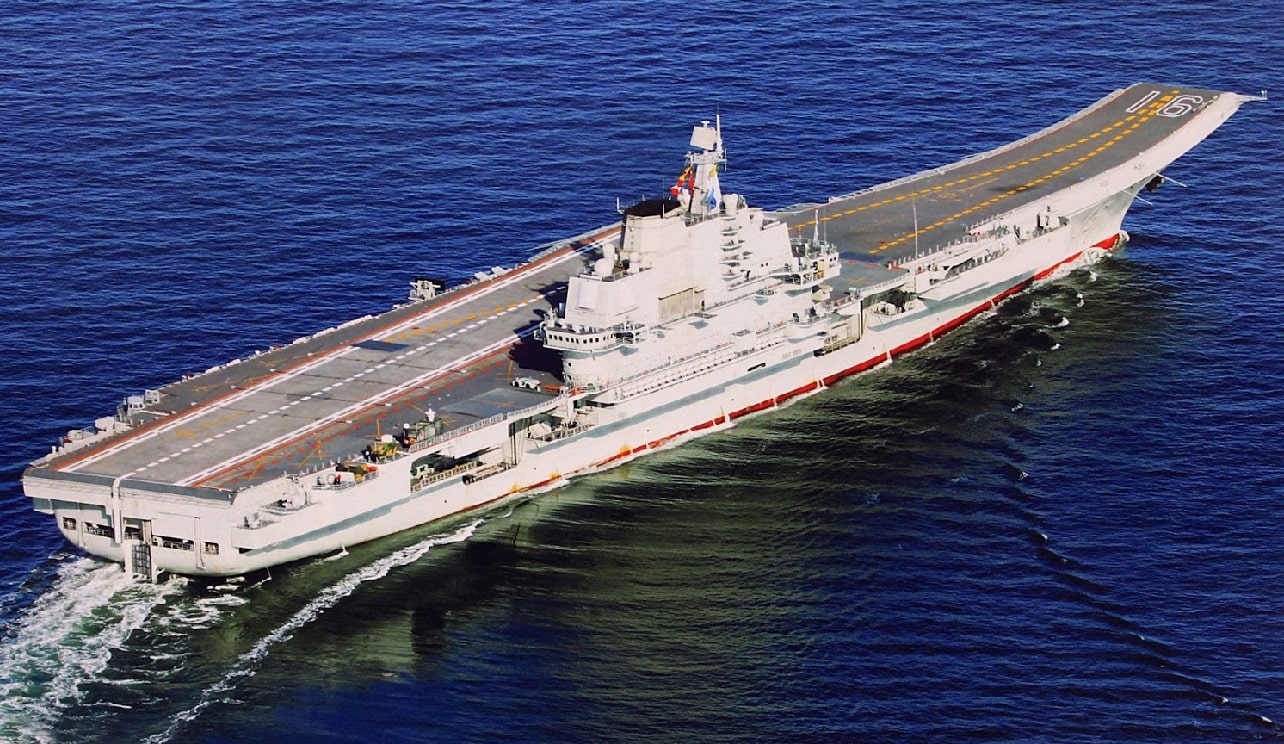Military officials from China and Japan are chirping back and forth as a Chinese aircraft carrier is flying sorties near Japan – activities that Tokyo thinks are provocative. The Japanese became so concerned this month that they sent a helicopter carrier to inspect the operations of China’s Liaoning carrier and the assorted ships of its battle group in the western Pacific after the Chinese flotilla steamed through the Miyako Strait earlier this month.
Japan Believes the Chinese Are Operating Too Close
Both sides are now crying foul. The Chinese say they are conducting routine carrier exercises to train their forces. The Japanese believe these operations are too close for comfort, near its southwestern islands. Japan has also sent its fighters to patrol near the Liaoning battle group that consists of destroyers, a frigate, and a support ship.
China Thinks Japan Is the One Escalating
China’s defense ministry said on May 26 that these Japanese activities to monitor the Liaoning strike force are “dangerous.” China believes the Japanese self-defense forces are using Beijing’s legitimate training efforts as an excuse to “expand its own military.”
Japan Sent a Ship to Monitor PLAN Battle Group
The Japanese noted that the People’s Liberation Army Navy (PLAN) was flying J-15 fighter planes day and night 143-miles southwest of Okinawa on May 3. The Japanese became incensed at these operations and deployed its helicopter JS Izumo to make a statement and monitor PLAN activity.
“We’re Doing Nothing Wrong,” China Said
The PLAN believes that they are adhering to “relevant international law and international practice, and not targeting any party,” according to USNI News.
Japan Is the One to Blame?
Senior Colonel Wu Qian, a spokesperson at China’s Ministry of National Defense, added this rejoinder, “By hyping Chinese military activities, Japan likely wanted to show off its presence and create excuses for its pursuit of military expansion, Wu said. “We firmly oppose this,” he added.
Japan thinks that the PLAN is threatening its sovereign territory. They pointed out that China flew more than one hundred sorties as of May 10 and this was a cause for concern.
PLAN Is Improving Carrier Operations
This is another example of how China is projecting power with its carriers. The Chinese are getting extensive training on carrier operations with the Liaoning, and the PLAN hopes to add to its carrier fleet. Shandong Type 002 was commissioned in 2019. A Type 003 is under construction.
No Let Up for These Confrontations
China will likely continue operating its carriers close to Okinawa and Taiwan as it hopes to show the world it can use its battle groups to launch aircraft and have these warplanes patrol waters around the sovereign seas of adversaries.
This Could Get Worse
These types of sea maneuvers are risky. They can result in accidents or miscalculations that could spark an international incident that would result in more than Japan and China simply engaging in a war with words.
Japan has every right to be concerned. Its maritime self-defense force is limited, and the PLAN dwarfs it. The United States has monitored this situation closely. U.S. Secretary of Defense Lloyd Austin met with his Japanese counterpart on May 4 and both countries voiced their commitment to a free and open Indo-Pacific region. China is likely to see a Japan-United States alliance as a threat and will keep conducting carrier operations. They are integrating more ships into their battle groups and showing Japan and the United States they can fly at night off carriers, which is noteworthy since the PLAN is relatively new to carrier operations.
Look for more maritime friction between China and Japan as they further confront each other in the region.
Now serving as 1945’s Defense and National Security Editor, Brent M. Eastwood, PhD, is the author of Humans, Machines, and Data: Future Trends in Warfare. He is an Emerging Threats expert and former U.S. Army Infantry officer. You can follow him on Twitter @BMEastwood.

